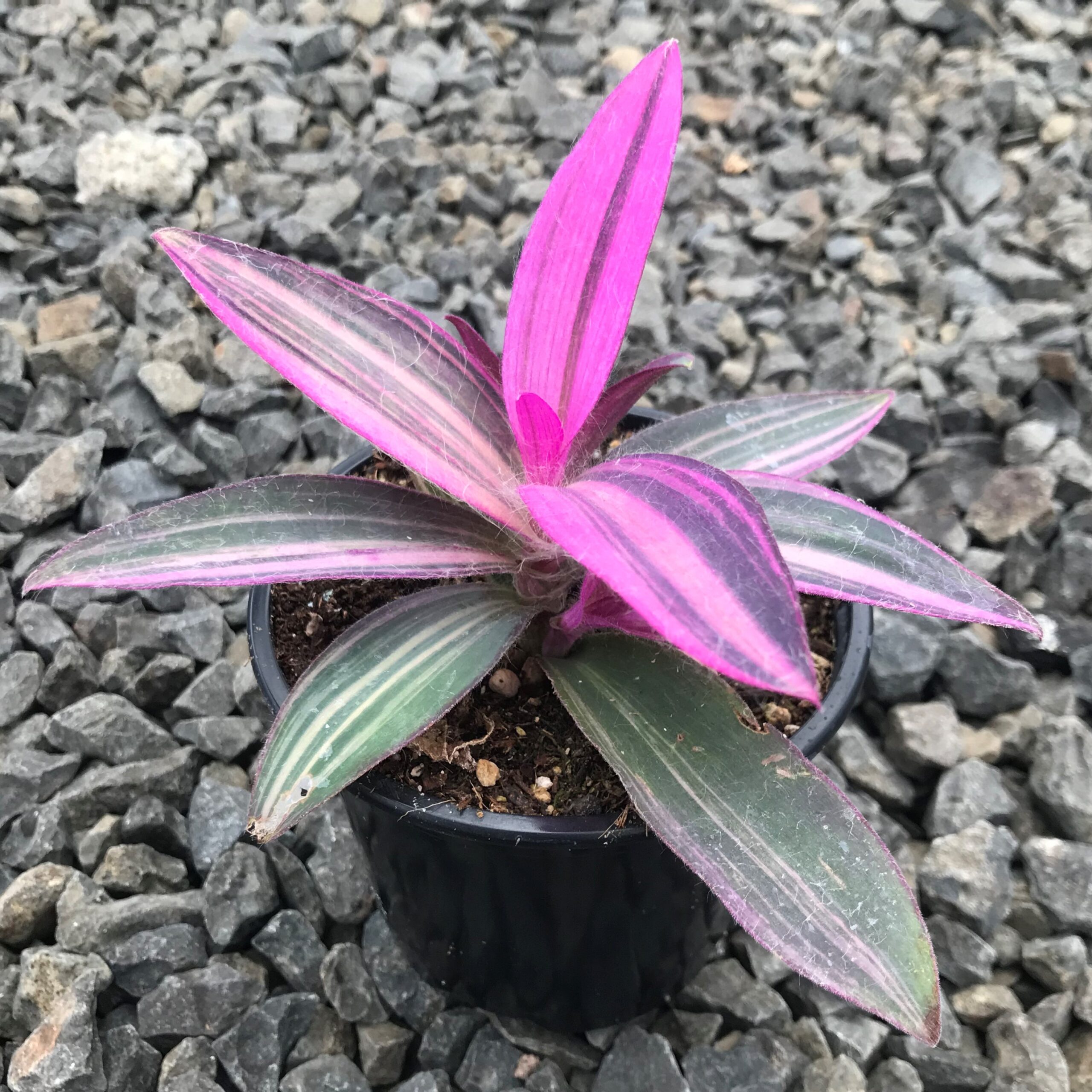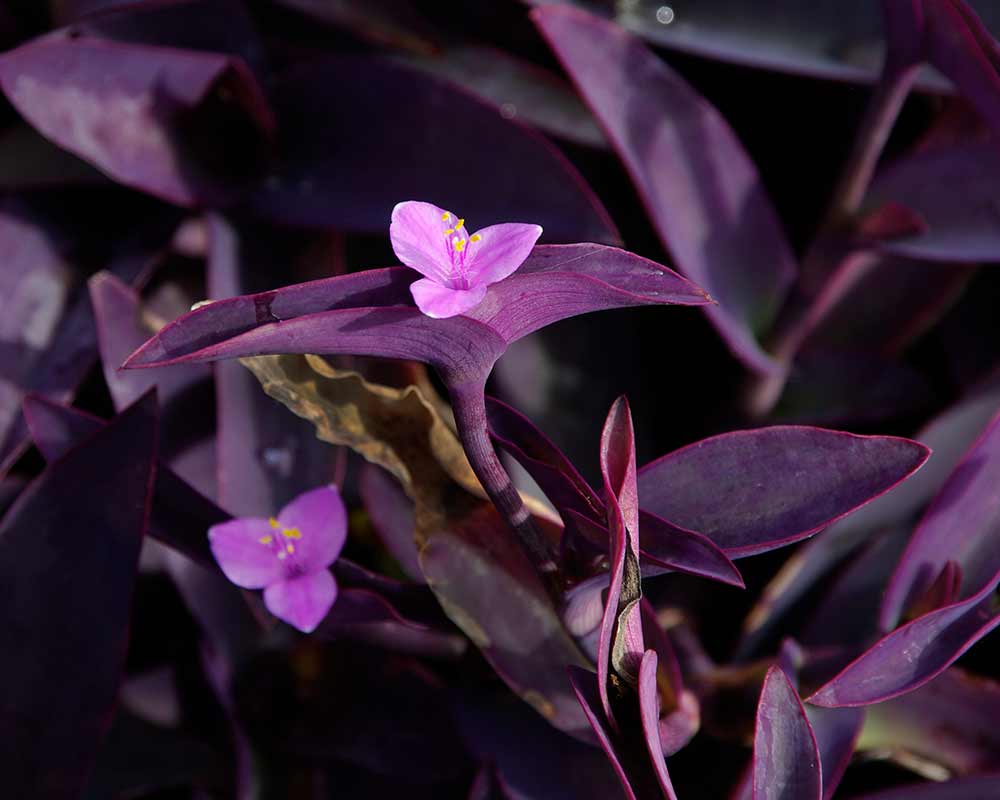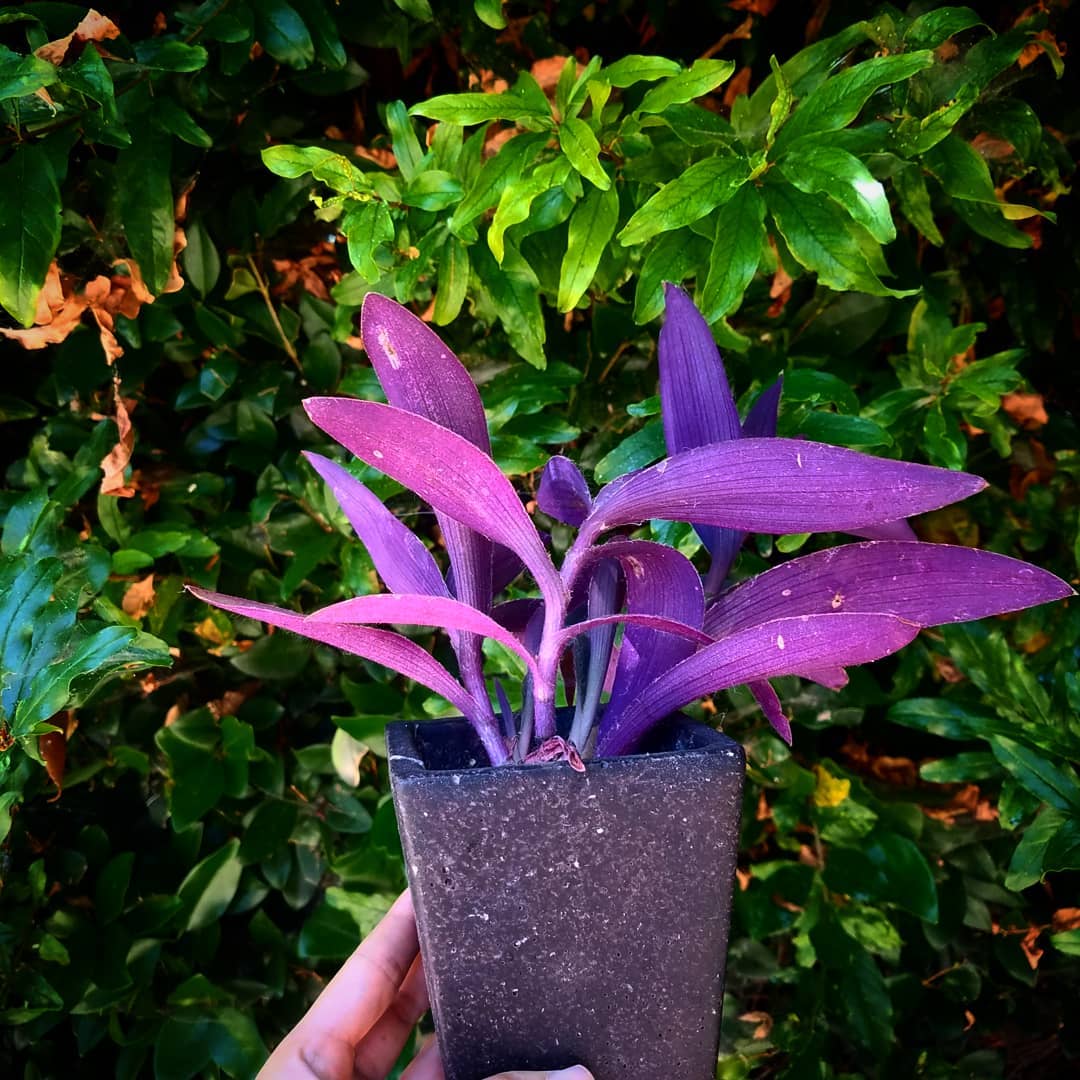
Purple Heart Tradescantia What Grows There Hugh Conlon Purple heart plant, Plants
Native to Mexico, Tradescantia Pallida 'Purpurea' is a hardy plant that is easy to care for. It prefers bright, indirect light and should be watered when the top inch of soil is dry. This plant can also be easily propagated through stem cuttings, making it an excellent choice for beginner gardeners.

Tradescantia pallida 'Purple Heart' Etsy Purple heart plant, Purple heart, Plants
Here's how to do it. Using clippers or scissors, trim a stem of a purple heart plant about 6 inches long. Remove lower leaves and place the clipping in a glass of water in sunlight. Roots will appear in a few days. Once the roots are visible, plant it in moist soil that drains well.
:max_bytes(150000):strip_icc()/growing-purple-heart-plants-5094561-03-9f623386fa8d4d6aa4bf7bb8c7588783.jpg)
How to Grow and Care for Purple Heart
The Purple Heart Plant or Tradescantia pallida, are known for their iconic purple stems that tend to grow out and trail. Surprisingly, most plant owners prefer to include this species in their collection for the foliage rather than the flowers.
:max_bytes(150000):strip_icc()/growing-purple-heart-plants-5094561-hero-653a1fd71b6841d7b2d8a550f9f2e2d3.jpg)
How to Grow and Care for Purple Heart
Tradescantia pallida "Purpurea" is a tender and attractive plant of outstanding colors. It is widely commercialized as a house plant and for outdoor gardens. It is a long-jointed sprawling ground-cover plant. Its stems and branches recline on the ground and its ascending extremities can grow up to 8 inches (20cm) tall.

Purple Heart Tradescantia Pallida Purple plants, Purple heart plant, Unusual plants
Tradescantia Pallida 'Purpurea', also known as Purple Heart or Purple Queen, is a stunning and resilient houseplant that adds a touch of drama to any indoor space. With its vibrant purple foliage and trailing habit, this Tradescantia variety is popular among plant enthusiasts.

The Purple Heart Plant Succulent plant for groundcover. Drought Tolerant
Scientific Name: Tradescantia pallida 'Purpurea' Hardiness Zone: Zones 7 through 10 Soil: Moist, well-draining; pH 6 to 8 Light: Full sun Water: Drought-tolerant Food: No fertilizer required.

Purple Heart Plant Care How to Grow Purple Hearts at Home Bob Vila
Origin: Mexico Height: Stems grow upright, then eventually trail over the side of the pot, up to 2 ft (60 cm) long. Light: Bright light is needed to maintain the dark purple color. Some direct sun is fine, but keep your plant shaded from strong summer sun. Long spaces between leaves indicate Tradescantia pallida needs more sunlight.. Water: Water thoroughly, then allow the top 1 in (2.5 cm) to.

Setcreasea purpurea 'Variegata' Variegated Purple Heart Plant (4.5" Pot) Little Prince To Go
Attractive and durable, Tradescantia pallida 'Purpurea' (Purple Heart) is a popular trailing evergreen perennial noted for its remarkable foliage of narrow, pointed, purple leaves, 2-5 in. long (5-12 cm). Arranged alternately along thick, but fragile, purple stems, the leaves are deep royal purple above, and bright violet underneath.

Quick Purple Heart Plant Care TroysTropics
Tradescantia pallida 'Purple Heart' is a very beautiful trailing plant from Mexico with the brightest purple leaves we have ever seen especially when planted outside in a sunny spot. Unfortunately not fully hardy but performs well outdoors during the frost free months. An exceptionally easy to grow plant that can be kept indoors during the.

Purple Heart Plant Tradescantia Pallida Purple heart plant, Plants, Flower garden plants
What is a Purple Heart Plant? Purple heart, purple spiderwort, purple queen plant, wandering jew purple heart, and sometimes "Moses-in-the-basket" refer to Tradescantia pallida. The plant is native to the Tamaulipas and Yucatan regions of Mexico and is characterized by dark purple stems with leaves that grow up to 7" long. Pale hairs.

Purple Heart Plant Tradescantia Pallida Purple Queen Plant Purple heart plant, Plants
Purple Heart plants are native to Mexico and Central America and grow as wild ground cover plants. These plants are characterized by their long, pointed leaves that are a deep shade of purple. They are also known for quickly spreading and covering large areas, making them a popular choice for landscaping projects.

How to Propagate Purple Heart Plants StepByStep Guide (With Pictures)
Clump forming. Potentially harmful. Harmful if eaten. Wear gloves and other protective equipment when handling. Genus. Agapanthus are clump-forming perennials with narrowly strap-shaped leaves, evergreen in some species, and erect stems bearing umbels of funnel-shaped blue or white flowers. Name status. Unresolved.

Purple Heart Plant (Setcreasea pallida) Care How to Take Care & Grow Purple Heart Plant
The 'Purple Heart' ( Tradescantia pallida) is a hardy plant with a stunning color payoff. It's a beautiful perennial with long, trailing stems that resemble rambling vines. Commonly planted in pots or displayed in hanging baskets, purple hearts are aptly named, as their foliage appears in silvery purple and violet hues.

How to grow n care purple heart plant shampy's garden, purple heart from cutting YouTube
Skip to: History // Comparisons // Conclusions // References (This article was updated on 4th April 2022, to include the registered name of the new cultivar, 'Purple Pixie'.) Tradescantia pallida 'Purpurea', often called by its synonym 'Purple Heart', has been popular for decades. It's a big and vigorous sprawling plant, with strong purple leaves and stems.
/GettyImages-1284962185-744900ff97264a3cb8980463b896c734.jpg)
Purple Heart Plant (Tradescantia pallida) Care Guide
A trailing evergreen perennial to 20cm in height, the purple stems with narrowly elliptic, purplish glaucous green leaves 8-15cm in length, bright purple beneath, and terminal bright pink, 3-petalled flowers 2-3cm in width Synonyms Tradescantia 'Purple Sabre' Tradescantia pallida 'Purple Heart' see more Setcreasea tampicana Join the RHS

Variegated Purple Heart Plant (Tradescantia Pallida) Care Guide
Purple heart (Tradescantia pallida) is aptly named, because its iconic purple stems grow beautiful small flower clusters that range from violet to pink. However, despite its unique blooms, many gardeners choose this fast-growing plant for its foliage, which is particularly vibrant.